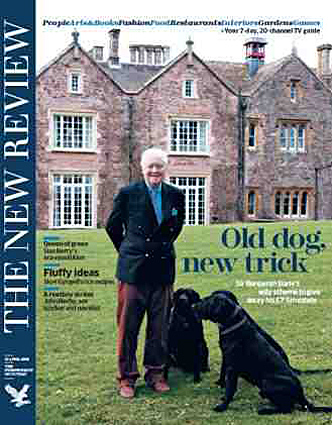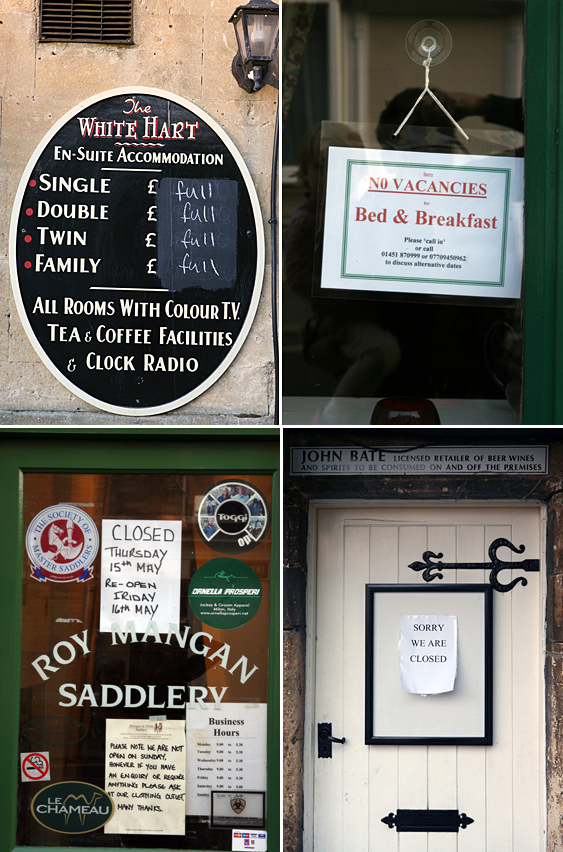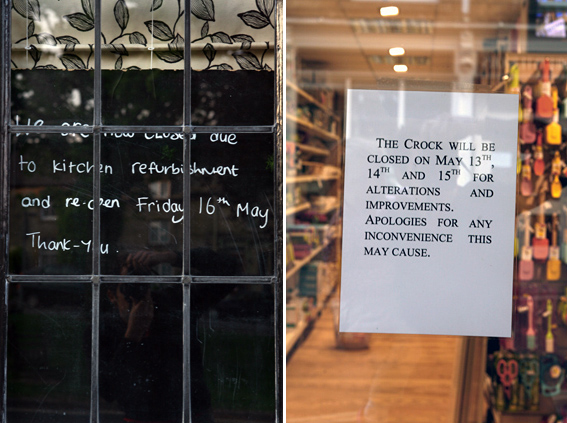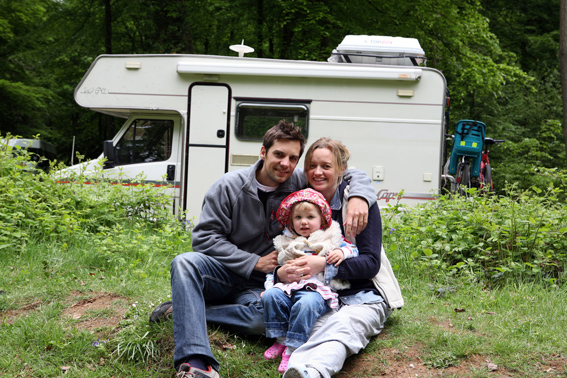On Sunday evening we attended a jazz concert and hog roast in the grounds of Maunsel House, the ancestral seat of the Slade Family and home of Sir Benjamin Slade. The thirteenth century house is where Geoffrey Chaucer allegedly wrote part of the Canterbury Tales.
In an interview in the Daily Mail on the occasion of the house opening to the public for the first time (dated August 26th 1986) Sir Ben is quoted as saying that he wanted to take the “stuffiness†out of stately home visiting. “Most houses do it on a show-off scale, but the majority of visitors don’t feel relaxed. Here they can do what they want- even grill a streak in the grounds. It’s the unstateliest home in England.â€
While Maunsel has been vastly improved, with most of the dry rot and rising damp that greeted visitors twenty years ago now gone, there is still a distinct feeling that this is anything but a museum piece of a stately home. Especially when compared to the experience of visiting a National Trust property like Knightshayes Court, where we’d spent the morning in an attempt to escape the torrential rain.
What’s more interesting, however, is Sir Ben’s quest to find an heir to this £7.5 million country pile. Having no children of his own, this eccentric, right-wing aristocrat has made international headlines thanks to his world-wide hunt for an appropriate Slade to continue his blood-line. No matter if he’s English or not.
It was even suggested last year that he had found a close DNA match in Isaac Slade, singer with Denver-based band The Fray. The 26-year-old has shown no indication of wanting to take on Maunsel, though he has formed an improbable friendship with the baronet.

To find out more about Sir Ben’s quest, read this recent interview in the Independent on Sunday Review by Robert Chalmers.
Â
Posted in EVENTS & PASTIMES | Comments Off on AN HEIR FOR ENGLAND’S UNSTATELIEST HOME
There is an interesting tit-for-tat over on Open Democracy between Vron Ware and Paul Kingsnorth.
Kingsnorth writes a critical review of Ware’s book Who Cares About Britishness? Read it here.
And Ware has now responded, setting out the fundamental differences between her approach to national identity and that of Kingsnorth in Real England. She writes:
“I bought Paul Kingsnorth’s book Real England a few weeks ago after reading a positive review of it. I was enthusiastic about his project of bringing an anti-globalisation perspective to the destruction of England’s distinctive environments as I also feel passionately about this. I have been writing about a particular English locality for ten years now, tracking the impact of global forces on every area of life. I’ve also been working on and against racism and nationalism, attentive to the past and future relationships between Britain and England. When I read him I realised that there are differences between us. Now, Kingsnorth’s mean-spirited and inaccurate review of my book commissioned by the British Council, Who Cares About Britishness? A global view of the national identity debate (Arcadia, 2007) suggests that there is little common ground between us. Rather than just respond to his attack I’d like to assess his whole approach.
Kingsnorth employs the well-worn method of identifying the ‘Real England’ by travelling around the country to document a tale of damage, decline and neglect. The portrait of Englishness that he paints conveys a lament for better times, coupled with a reluctance to protest effectively at the destruction of ‘ways of life’ and institutions that once developed out of local, English culture. I thought the book would also bring an added dimension, especially since George Monbiot’s recommendation on the front cover announces that the book ‘helps to shape our view of who we are and who we want to be’……”
Read the rest of her article here.
Posted in RESEARCH | Comments Off on ENGLISHNESS VS BRITISHNESS
Using a 5×4 view camera is a unique experience, quite removed from that of using a Mamiya 7 (my camera of choice for Motherland). Accordingly, I’ve developed a very different method of photographing my subject.
More often than not, I find myself wandering around a landscape looking for a scene that I think could make a photograph. If I see some potential, I’ll often take some digital photographs for reference, almost like a sketchbook. Once I’m happy with my location, I’ll set up the tripod and camera, which normally takes about 2-3 minutes (for the technically minded among you, please see Q Tuan Luong’s step-by-step guide to operating the view camera below) and finally place the film plate onto the camera back. I’ll then wait for the scene to unfold within my frame, taking the photograph at a given moment.
There’s often a lot of patience needed, either waiting for people to enter the landscape, or, because many of the scenes I’m photographing contain large groups of people, a moment when as many people as possible are distributed in an interesting way throughout the landscape. One fact about using a 5×4 plate camera (similarly with a 10×8 camera) is that once you’ve placed the film plate onto the back of the camera, you can no longer see through the lens. You are then relying on memory as to where in the landscape your framing starts and ends.
Having captured what I consider the final photograph from a scene, I now force myself to wait another few minutes to see what else happens, as often something does. This is a result of some frustrating missed opportunities where, having started to pack the camera away, I’ve spotted something happening, and not had time to re-frame and set up the camera to capture it. So I’ll now wait a further seven minutes to make sure. Why seven? Five just seemed too obvious.Â
Â
A step-by-step guide to operating the view camera by Q. T Luong
Operating the view camera is done in a series of steps, whose order is crucial. Reversing some of the steps will ruin the image. Reversing some other steps will unnecessarily waste time. Although this might seem complicated at first, if you always stick to the same sequence, it will become second nature. You will then be able to concentrate on the subject.
Here is the sequence that I favour in the field.
·      Choose the camera position, approximate orientation, focal length.
·      Set up and level the tripod and camera.
·      Attach the lens and open it to full aperture.
·      Focus roughly using the focussing knob.
·      Adjust precisely the composition while looking at the ground glass.
·      Focus precisely with tilts/swings.
·      Determine the optimal aperture.
·      Re-adjust slightly the composition (optional but recommended).
·      Adjust filters and compendium shade (optional but recommended).
·      Check for vignetting (optional but recommended).
·      Close the lens, cock the shutter, rap and insert the film holder.
·      Determine the shutter speed.
·      Set the aperture and shutter speed.
·      Remove the dark slide.
·      Look at the subject.
·      Fire the shutter with a cable release.
·      Put the darkslide back in.
·      Remove the filmholder.
·      Make a second identical exposure (optional but recommended).
·      Pack and move to the next spot.
Â
Posted in ON THE JOB | Comments Off on THE SEVEN MINUTE RULE
Congratulations to Laura Pannack for winning the Next Perspective competition. Laura is a recent graduate of the BA Photography Course at Brighton University and has also been assisting me over the past couple of years
The Next Perspective jury panel consisted of Henry Horenstein from the Rhode Island School of Design, Dr. Juliet Hacking from Sotheby’s Institute of Art in London and Clare Freestone from the National Portrait Gallery in London.
Â
Posted in MISCELLANEOUS | Comments Off on NEXT PERSPECTIVE
I just wanted to alert people to this Panel Discussion being held at The Photographers’ Gallery entitled ‘Artistic Exchange’. It sounds like it could be an interesting event. I wish I could be there.

The details:
Is it useful to define an exhibition by its nationality? Can cultural distance and proximity both be advantages in the curatorial process?
Join us for a panel discussion (chaired by Dr. Isobel Whitelegg, with Egyptian artist Mahmoud Khaled, exhibiting artist Juan Pablo Echeverri and curator Camilla Brown) on how curators translate artists work.
27 May 2008 19:00
£5.00 / £3.50 concessions.
Â
Posted in RESEARCH | Comments Off on ARTISTIC EXCHANGE
Yesterday I was in Weston-Super-Mare photographing a lawn bowls match at Clarence Bowling Club. Having commented on what a plush club house they had, I was told the story of Les Andrews.
Les was a life-long member of the Clarence Bowls Club, having bowled there for 52 years. He was a keen bowler, although in his latter years he would often be seen sitting up at the bar enjoying a drink with other older members of the club. A humble man, he lived in a modest flat in Weston. He didn’t own a car and rarely went on holiday. After his death a few years ago the trustees were shocked to discover he’d left the club £500,000 in his will (with the remaining £500,000 of his estate going to the National Trust). Which was slightly fortuatous as they’d just failed in a bid to secure National Lottery funding (bowling is not deemed ethnically diverse enough). And so was built the Les Andrews Club House.Â
Posted in EVENTS & PASTIMES | Comments Off on GOD BLESS LES ANDREWS
Thanks to Aaron for posting this poem by G.K. Chesterton
The Rolling English Road
- Before the Roman came to Rye or out to Severn strode,
- The rolling English drunkard made the rolling English road.
- A reeling road, a rolling road, that rambles round the shire,
- And after him the parson ran, the sexton and the squire;
- A merry road, a mazy road, and such as we did tread
- The night we went to Birmingham by way of Beachy Head.
- I knew no harm of Bonaparte and plenty of the Squire,
- And for to fight the Frenchman I did not much desire;
- But I did bash their baggonets because they came arrayed
- To straighten out the crooked road an English drunkard made,
- Where you and I went down the lane with ale-mugs in our hands,
- The night we went to Glastonbury by way of Goodwin Sands.
- His sins they were forgiven him; or why do flowers run
- Behind him; and the hedges all strengthening in the sun?
- The wild thing went from left to right and knew not which was which,
- But the wild rose was above him when they found him in the ditch.
- God pardon us, nor harden us; we did not see so clear
- The night we went to Bannockburn by way of Brighton Pier.
- My friends, we will not go again or ape an ancient rage,
- Or stretch the folly of our youth to be the shame of age,
- But walk with clearer eyes and ears this path that wandereth,
- And see undrugged in evening light the decent inn of death;
- For there is good news yet to hear and fine things to be seen,
- Before we go to Paradise by way of Kensal Green.
-
-
-
Posted in POETRY | 1 Comment »
“Town braces itself for arrival of gypsies†ran the headline in the Wilts and Gloucestershire Standard last week in reference to the bi-annual Stow Gypsy Horse Fair. The Cotswold town of Stow-on-the-Wold has held the fair since 1476, when it was granted a royal charter and it took place this year on Thursday 15th May.
Thousands of travellers, most of them Romany gypsies, descend upon this decidedly conservative town, arriving in the modern caravans and lorries which have largely replaced the brightly painted wagons that visitors would have seen thirty years ago. The gypsies trade horses and erect tents and stalls selling goods ranging from plastic toys to fake mink coats for children.
In recent years local residents have expressed increasing dissatisfaction with the disruption the fair brings. Political correctness is abandoned as they talk of ‘thieving gypsies’ and wonder at the fact that many of the travellers cannot read or write properly. In 2000, a court injunction threatened every trader at the fair with imprisonment if they camped overnight in the field in which it is held. The gypsies got around this simply by buying the field.
At Stow’s Tourist Information Centre the polite, well-dressed lady manning the desk informed us that the event wasn’t welcome but that the authorities were powerless to stop it. She talked of businesses deciding to close, rather than face theft or damage to their properties and sure enough, most of the shops, B&Bs and local pubs all had hand-written ‘closed’ signs hanging in the window.Â

I particularly liked the unnecessarily elaborate notes pinned in some shop windows. “We are now closed due to kitchen refurbishment and re-open Friday 16th May†(the day after the festival) and “The Crock will be closed on May 13th, 14th and 15th for alterations and improvements†(no sign of alterations when I passed).

Our camper van provoked an amusing reaction. Parking up for the night at Stow Rugby Club, we were approached by a member of the club to check that we’d paid. We assured him everything was in order. “Oh,†he said unapologetically, “I thought you were with the fair.â€Â Then, reassured of our ‘respectability’, “If you go, watch your pockets. Some of those kids will have your wallet in an instant.â€
A few days later, while staying on a small campsite in the Forest of Dean, we heard the unmistakable beat of a large sound system booming out in the middle of the night. An all night rave in this ‘heart-shaped land’ that inspired the term ‘picturesque’ and all those genteel 18th and 19th century tours! (see footnote below).  Our fellow campers were not impressed. The owner of the campsite relayed the latest information in disparaging terms every time her telephone rang.
I cycled off in search of this spectacle, lugging my tripod and camera on my back. It took me an hour to find it, but it was worth it, greeted as I was by the surreal sight of a transit van spilling out huge speakers, around which were gathered about fifty people all distinctly the worse for wear, head banging and lolling around, but in a beautiful pine clearing in the forest. I managed a few pictures before the police arrived and stopped the proceedings. (For an online article about raves in the Forest of Dean see this link).
It’s clear that most people do not want unofficial, disruptive and noisy events taking place within the vicinity of their homes. They worry about damage to property and land. But I felt that such events enrich our cultural and social landscape, which can seem increasingly sterile and regimented, and are expressions of diversity of people and place and as such, should be enjoyed (responsibly, of course!)
Â
Footnote- The Birthplace of British Tourism
The Wye Valley and Forest of Dean witnessed the birth of British tourism in the eighteenth century. The area became widely known following the publication in 1782 of Observations on the River Wye by the Reverend William Gilpin. The first illustrated tour guide to be published in Britain, it helped travellers locate and enjoy the most “picturesque” aspects of the countryside. The Wye Valley’s particular attraction was its river scenery, and the many guidebooks, engravings and paintings ensured a continuing steady stream of visitors which grew after the building of a new turnpike road up the valley in 1822 and the opening of a rail line in 1865.
Â
Posted in EVENTS & PASTIMES | Comments Off on NOT IN MY BACKYARD
We’ve just completed our first three weeks on the road having covered ground in Hampshire, Berkshire, Gloucestershire, Worcestershire and Herefordshire.
Here’s a family portrait (rather twee I know) taken outside the motorhome in the Forest of Dean.

In the coming weeks we’ll be heading south into Wiltshire then across to Somerset, Devon and down into Dorset.
If you know of any interesting events taking place in these areas, then do post them up.Â
Â
Posted in POSTCARDS | Comments Off on JOURNEY UPDATE – WEEK 3
Here are a few quotes I’ve come across in my research over past few weeks, which I’ve found particularly interesting or inspirational. If you have any other suggestions, please post them below.
“Happy are those who see beauty in modest spots where others see nothing. Everything is beautiful, the whole secret lies in knowing how to interpret.â€Â
Pissarro (1893). Quoted in Britain Observed by Geoffrey Grigson (1975)
“My limited and abstracted art is to be found under every hedge, and in every lane, and therefore nobody thinks it worth picking up.â€Â
Constable (1832) on declaring he had never seen an ugly thing in his life. Quoted in Britain Observed by Geoffrey Grigson (1975)
“It is part of the photographer’s job to see more intensely than most people do. He must have and keep in him something of the receptiveness of the child who looks at the world for the first time or of the traveller who enters a strange country.â€Â
Bill Brandt (1948)
“One of the pleasures of being English is to return to this country after a longish time abroad, especially if you come up the Solent in a liner….soon familiarity blinds you again, but for an hour ot two you have caught a surprising vision of your country and your countrymen: you have notice a hundred details which are peculiar to England; you have, in fact been able to look through foreign eyes.â€Â
Raymond Mortimer from the introduction to Bill Brandt’s The English at Home (1936)
 “England has a much softer atmosphere. Colours just don’t sing the way they do in the States…When I got back to England I found everything so grey that I didn’t see any point in shooting in colour. It didn’t seem to be an important part of our lives….To me Britian is very much a black and white country…â€Â
Tony Ray-Jones from an interview in SLR Camera (1969)
 “We must live in a country and work there in order to understand its ways and customs – to travel through as a tourist is to see only clichés.â€Â
Tony Ray-Jones, Notes on Jean Renoir (c.1967)
 “One can learn a good deal about the spirit of England from the comic coloured postcards that you see in the windows of cheap stationers’ shops. These things are a sort of diary upon which the English people have unconsciously recorded themselves. Their old-fashioned outlook, their graded snobberies, their mixture of bawdiness and hypocrisy, their extreme gentleness, their deeply moral attitude to life, are all mirrored there.â€Â
George Orwell, The Lion and the Unicorn (1941)
“Englishness is continuous, it stretches into the future and the past, there is something in it that persists; as in a living creature. What can the England of 1940 have in common with the England of 1840? But then, what have you in common with the child of five whose photograph your mother keeps on the mantelpiece? Nothing, except that you happen to be the same person.â€Â
George Orwell, The Lion and the Unicorn (1941)
 “England is not at all a single category but a set of relationships. The nation exists in tension. Its fellow members remain deeply divided among themselves, but at the same time they constantly prove themselves ready to unite around certain issues, talismans and images.â€Â
John Taylor, A Dream of England (1994)
“The English have not devoted a lot of energy discussing who they are. It is a mark of self-confidence: the English have not spent a great deal of time defining themselves because they haven’t needed to.â€Â Â
Jeremy Paxman, The English (1999)
“In a society of individuals, loyalties are to kindred spirits. Instead of easy-going, random meetings of street life, the English do their socialising by choice and form clubs – ‘Who runs the country?’ asked John Betjeman rhetorically. ‘The RSPB. Their members are behind every hedge.’ And he was speaking long before the RSPB membership reached its present vertiginous levels of well over one million. There are clubs to going fishing, support football teams, play cards, arrange flowers, race pigeons, make jam, ride bicycles, watch birds, even for going on holiday.â€Â
Jeremy Paxman, The English (1999)
“I hope that this apparently incongruous series of images will communicate something of the mixture of anxiety and apprehension, sadness and affection with which I view the current state of our nation.â€Â
Paul Graham from the introduction to Britain in 1984 co-published by the National Media Museum and The Photographers’ Gallery (1984)
Posted in ENGLISHNESS, INSPIRATION, RESEARCH | 1 Comment »






